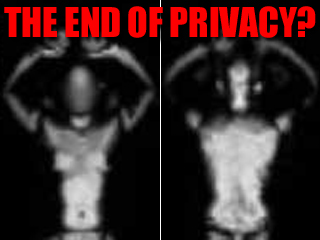
The Transportation Security Administration is looking to increase the number of full-body scanners at U.S. airports over the next few years as it reviews security procedures in the wake of the attempted bombing of a Northwest Airlines flight last week.
Experts say a full-body scanner likely would have detected the powdered explosive that terror suspect Umar Farouk Abdulmutallab allegedly stuffed in his underwear and ignited aboard a flight from Amsterdam to Detroit on Christmas.
Though nothing is foolproof, and concerns remain that intelligence agencies compound security gaps by not properly sharing information about terror suspects, the TSA's goal is to have multiple layers of advanced technology to ensure nothing dangerous gets aboard a plane.
The full-body scanners are one of several new technologies that have been introduced in recent years; and what's available is just the beginning.
"We are continually evolving and testing and deploying new technology as they become available to us," TSA spokeswoman Lauren Gaches said.
The full-body scanners allow TSA officials to look under clothing for any contraband -- for instance, the PETN explosive sewn into the underwear of the alleged would-be bomber last week -- but there are relatively few in operation now. Nineteen airports in the U.S. are using a total of 40 of the scanners. Only six airports use the scanners as their primary method of screening.
But Gaches said TSA has purchased and received 150 more of the machines, and it plans to distribute them next year. The agency plans to purchase 300 more next year, at a cost of between $130,000-$170,000 per unit.
But the machines, which can "see" through clothing and reveal the shape of a passenger's body, have raised privacy concerns and are currently optional. Any passenger who doesn't want to go through a full-body scanner is allowed to request a pat-down instead.
In addition to the full-body scanners, TSA has the following equipment on hand:
-- More than 900 "Advanced Technology X-ray Systems." While every airport in America has some kind of X-ray machine for carry-on baggage, this new technology allows officers to see the bags from multiple angles. The older machines allow security officers to see bags only from a top-down, two-dimensional view. Some of the new machines also have high-definition zoom. If something looks suspicious, the new machines allow officers to get a better, quicker look at it.
-- Thirty-four CastScope machines. These X-ray machines, deployed at 11 airports, are used to examine casts or prosthetic limbs to make sure they don't contain a weapon or explosive. They've generally been distributed at airports that see a large number of injured passengers.
-- Explosive Detection Systems. This system, which works like an MRI machine, is standard at many airports and is used to screen checked baggage for weapons and explosives. Gaches said that any airport not using this system instead uses something called Explosives Trace Detection. This is a smaller piece of equipment -- officers typically swab luggage and then use the portable detection unit to analyze it for evidence of explosives.
-- "Puffer" machines. This system has largely been abandoned after the machines kept breaking down. The government reportedly planned to install hundreds of them, but Gaches said there are no plans now to purchase new ones. The machines work by blowing puffs of air on passengers to detect particles of explosives. Gaches said there are still 18 of the machines at various airports.
But no matter how many technological marvels are on hand at U.S. airports, they don't mean a thing unless they're used on the right people. Abdulmutallab was neither on a "no-fly" list nor a separate list that requires secondary screening, even though he was on a massive terror watch database of over a half-million people. Odds are Abdulmutallab would never have come close a full-body scanner if he were at a U.S. airport.
Lt. Col. Tony Shaffer, director of external communications for the Center for Advanced Defense Studies, said intelligence agencies need to share information more freely to detect people who are a real danger.
"It's not enough because you're looking in the wrong spot," he said of airline security measures. Citing reports that the suspect chose a volatile part of the airplane to sit in, paid cash for his ticket and did not have any check-in baggage, Shaffer questioned why low-tech screening -- common sense -- did not catch the suspect before he boarded.
"Why are we not paying attention to fundamentals here?" he said.
